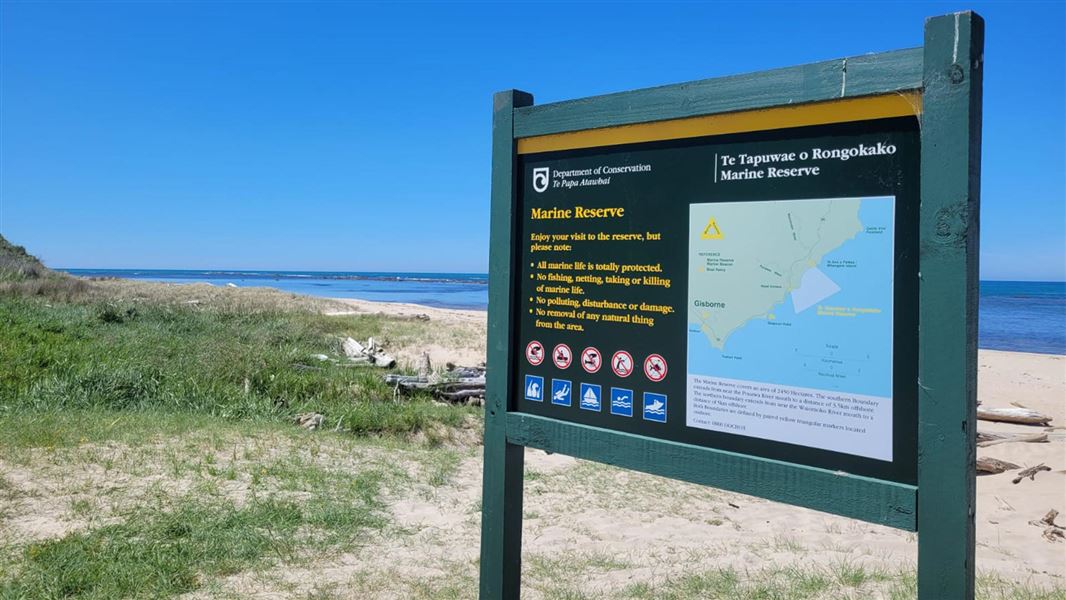Overfishing has greater impact on midwestern fish populations than climate change – The Badger Herald

Report on Fish Population Dynamics in the Upper Midwest and Implications for Sustainable Development Goals
1.0 Introduction and Executive Summary
A recent study from the University of Wisconsin provides critical data on the primary stressors affecting freshwater fish populations in Wisconsin and Minnesota. The findings indicate that overfishing currently has a more substantial impact than climate change, presenting both a challenge and an opportunity for local management in achieving key United Nations Sustainable Development Goals (SDGs). This report analyzes the study’s findings with a direct focus on SDG 14 (Life Below Water), SDG 13 (Climate Action), SDG 12 (Responsible Consumption and Production), and SDG 4 (Quality Education).
2.0 Analysis of Primary Stressors on Aquatic Ecosystems
The study’s central finding is the comparative impact of overfishing and climate change on regional fish populations. This directly informs strategies for meeting SDG 14, which aims to conserve and sustainably use aquatic resources.
- Overfishing as the Dominant Factor: For the majority of species studied, harvesting pressures from fishing activities were identified as the primary driver of population changes. This highlights an urgent need to address unsustainable fishing practices to meet SDG Target 14.4, which calls for an end to overfishing.
- Climate Change as a Growing Threat: While secondary to overfishing at present, climate change has a detectable and growing impact, aligning with the concerns of SDG 13. The study notes that rising temperatures are causing shifts in population dynamics, with some species benefiting while others are harmed. Researchers warn this balance could shift negatively for all species as warming continues.
3.0 Recommended Management Strategies for Sustainable Resource Use
The report underscores the necessity of localized and adaptive management strategies to ensure the long-term health of fisheries. These recommendations support the principles of SDG 12, which promotes sustainable consumption and production patterns.
3.1 Tailored Management Approach
A one-size-fits-all approach is insufficient. The study advocates for tailored management, an individualized strategy for each lake ecosystem. This involves a data-driven approach to resource management, crucial for sustainable production.
- Adjusting Season Length: Modifying the duration of fishing seasons to protect species during critical reproductive periods.
- Revising Bag Limits: Setting appropriate limits on the number of fish an individual can harvest to prevent over-extraction.
- Implementing Size Limits: Establishing minimum size limits to ensure fish can reach maturity and reproduce before being harvested.
These measures, applied at both recreational and commercial levels, are essential for aligning local practices with the goals of SDG 12 and SDG 14.
4.0 The Role of Education and Collaborative Partnerships
The study emphasizes that effective conservation is contingent upon public knowledge and collaborative effort, reflecting the importance of SDG 4 (Quality Education) and SDG 17 (Partnerships for the Goals).
- Public Education (SDG 4): Researchers Luoliang Xu and Olaf Jensen stated that public engagement in conservation is often limited by a lack of information. Communicating scientific findings to the public is critical for fostering a community-wide conservation ethic and empowering individuals to make sustainable choices.
- Collaborative Data Collection (SDG 17): The study’s data was the product of a successful partnership between multiple stakeholders, including:
- Wisconsin Department of Natural Resources
- Minnesota Department of Natural Resources
- Great Lakes Indian Fish & Wildlife Commission
This collaboration exemplifies the multi-stakeholder partnerships required to achieve the SDGs.
5.0 Conclusion: A Call for Localized Action
The study’s conclusions should be interpreted as a hopeful message. While global challenges like climate change (SDG 13) persist, the research demonstrates that local and regional authorities have significant agency to positively impact fish populations. By implementing tailored, data-driven management strategies aimed at curbing overfishing, communities can directly advance SDG 14 (Life Below Water) and build resilience in their local ecosystems. Effective local management remains the most powerful tool for mitigating immediate threats and securing the future of these vital freshwater resources.
Analysis of SDGs, Targets, and Indicators
1. Which SDGs are addressed or connected to the issues highlighted in the article?
-
SDG 14: Life Below Water
This is the most directly relevant SDG. The article’s central theme is the health of fish populations in the freshwater lakes of Wisconsin and Minnesota. It discusses the primary threats to these populations, namely overfishing, and the need for sustainable management practices. The entire study focuses on conserving and sustainably using aquatic resources.
-
SDG 13: Climate Action
The article explicitly addresses the impact of climate change and global warming on fish populations. While it concludes that overfishing is currently a greater threat, it warns that “As climate change continues, we may see fishing that goes past the point where any species are benefiting and into a negative phase for all of them.” This connects the issue directly to the need for climate action to protect ecosystems.
-
SDG 12: Responsible Consumption and Production
The issue of overfishing is a direct result of unsustainable consumption patterns. The article’s proposed solution of “tailored management,” which includes adjusting “the bag limits — how many fish [someone] is allowed to take home,” is a strategy to ensure the consumption of fish (a natural resource) is sustainable and does not deplete the stock.
-
SDG 4: Quality Education
The article emphasizes the critical role of public education in conservation efforts. It quotes a researcher saying, “People are able to engage in conservation practices when they are educated,” and “the key is they do not know the information.” This highlights the connection between providing quality information and education to the public to promote sustainable development and conservation actions.
2. What specific targets under those SDGs can be identified based on the article’s content?
-
SDG 14: Life Below Water
- Target 14.4: “By 2020, effectively regulate harvesting and end overfishing… and implement science-based management plans, in order to restore fish stocks in the shortest time feasible…” The article’s core finding that “overfishing is hurting the Wisconsin and Minnesota fish population” and its call for “tailored management” based on scientific data directly align with this target. The proposed management strategies like adjusting season length and bag limits are methods to regulate harvesting and end overfishing.
- Target 14.2: “By 2020, sustainably manage and protect marine and coastal ecosystems…” Although the article discusses freshwater ecosystems, the principle of sustainable management and protection is identical. The study’s goal is to inform strategies for the sustainable management of lake ecosystems to prevent the adverse impacts of overfishing and climate change.
- Target 14.a: “Increase scientific knowledge, develop research capacity…” The article is based on a “recent University of Wisconsin study” that used data collected by state and tribal agencies. This entire effort represents an increase in scientific knowledge aimed at improving the management of fish populations.
-
SDG 13: Climate Action
- Target 13.3: “Improve education, awareness-raising and human and institutional capacity on climate change mitigation, adaptation, impact reduction…” The article discusses the detectable impact of climate change on fish populations and the potential for future negative shifts. By communicating these scientific findings, the study contributes to raising awareness about the local impacts of climate change, which is a key component of this target.
-
SDG 12: Responsible Consumption and Production
- Target 12.2: “By 2030, achieve the sustainable management and efficient use of natural resources.” Fish are a natural resource, and the article’s focus on managing harvesting to “match the ability of each lake to replace the fish that are harvested” is the very definition of sustainable management and use of this resource.
-
SDG 4: Quality Education
- Target 4.7: “By 2030, ensure that all learners acquire the knowledge and skills needed to promote sustainable development…” The article explicitly states that a key to conservation is public knowledge. The researchers stress that it is “important that the conclusions of the study… are communicated to the public” so that people can “engage in conservation practices.” This directly supports the goal of education for sustainable development.
3. Are there any indicators mentioned or implied in the article that can be used to measure progress towards the identified targets?
The article does not mention official SDG indicators, but it implies several metrics that could be used to measure progress:
- Status of Fish Stocks: The data collected by the Wisconsin and Minnesota Departments of Natural Resources and the Great Lakes Indian Fish & Wildlife Commission serves as a direct indicator of fish population health. Progress towards Target 14.4 would be measured by an improvement in these populations over time.
- Implementation of Management Plans: An indicator for Target 14.4 is the extent to which “tailored management” is implemented. This could be measured by tracking the number of lakes where regulations (season length, bag limits, size limits) have been adjusted based on scientific data about that specific lake’s capacity.
- Harvest Rates vs. Replenishment Rates: The article mentions the goal is to “match the ability of each lake to replace the fish that are harvested.” A key indicator for Target 12.2 would be the ratio of fish harvested to the scientifically estimated sustainable yield for each lake. A ratio at or below 1 would indicate sustainable use.
- Public Knowledge and Engagement in Conservation: For Target 4.7, an implied indicator is the level of public awareness. The article states, “the key is they do not know the information.” Progress could be measured through surveys assessing public understanding of local fishing regulations, the impact of overfishing, and their participation in conservation practices.
4. Table of SDGs, Targets, and Indicators
| SDGs | Targets | Indicators (Implied from the Article) |
|---|---|---|
| SDG 14: Life Below Water | 14.4: End overfishing and implement science-based management plans to restore fish stocks. |
|
| SDG 13: Climate Action | 13.3: Improve education and awareness-raising on climate change impact reduction. |
|
| SDG 12: Responsible Consumption and Production | 12.2: Achieve the sustainable management and efficient use of natural resources. |
|
| SDG 4: Quality Education | 4.7: Ensure learners acquire knowledge for sustainable development. |
|
Source: badgerherald.com

What is Your Reaction?
 Like
0
Like
0
 Dislike
0
Dislike
0
 Love
0
Love
0
 Funny
0
Funny
0
 Angry
0
Angry
0
 Sad
0
Sad
0
 Wow
0
Wow
0
















































/environment-climate-change-and-health-(ech)/water-sanitation-hygiene-and-health-(wsh)/landfill-tuvalu-36092.tmb-1200v.jpg?sfvrsn=5c21fe40_1#)

.jpg.webp?itok=0ZsAnae9#)
























